
Expand Your Characterization Capabilities with Triple Detection
The use of triple-detection GPC combining multi-angle static light scattering (MALS), differential viscometry (dVI) or dynamic light scattering (DLS), and differential refractometry (dRI), independently or in combination, provides quantitative analysis of:
- Mark-Houwink-Sakurada parameters
- Conformation (random coil, branched, globular)
- Branching ratio, branches per molecule in polymers and dendrites
- The shape of protein aggregates or amyloid fibrils
- Empty or filled carrier nanoparticles
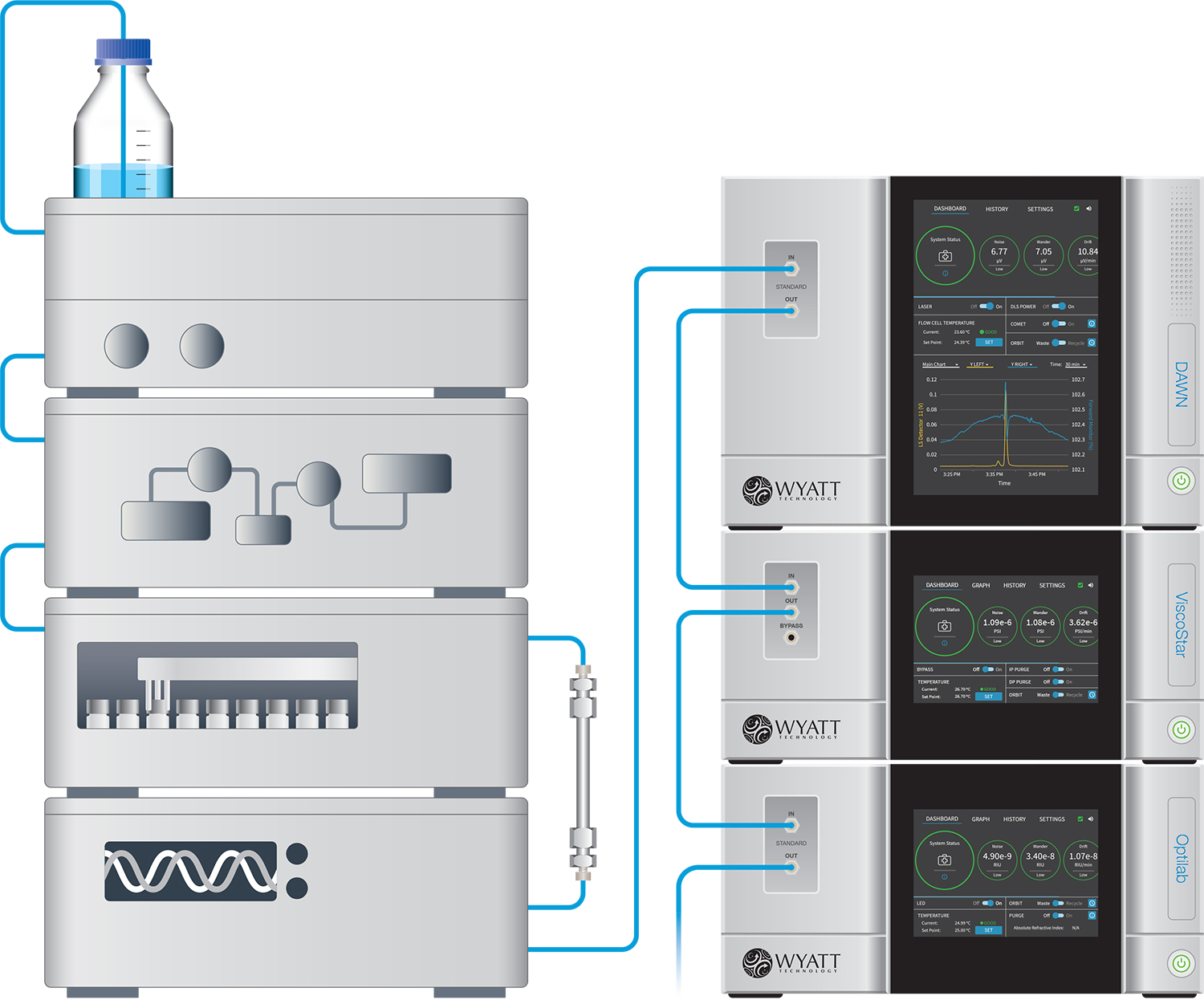
DAWN™
The most sensitive MALS detector available, anywhere. Incorporates detectors at 18 angles to determine molar masses from 200 Da to 1 GDa and radii from 10 – 500 nm.
Optilab™
A unique on-line differential refractometer for measuring concentration of any macromolecule, regardless of chromophores. The high-concentration Optilab accommodates protein concentration up to 180 mg/mL.
ViscoStar™
A highly sensitive, on-line differential viscometer used in conjunction with SEC-MALS to determine the size and conformation of all types of biopolymers, synthetic polymers and even proteins and peptides.
The ViscoStar incorporates multiple novel technologies to provide the highest sensitivity, stability and solvent compatibility of any available viscometer for GPC. Its ease-of-use and serviceability make it the perfect companion for Wyatt's DAWN light scattering and Optilab refractive index detectors.
Don't Assume
While there are many ways to determine the molar masses, or molecular weights, of macromolecules such as proteins, biopolymers and synthetic polymers, only one determines absolute molecular weights in solution, rapidly and effectively: Multi-Angle static Light Scattering (MALS). MALS combines the precise measurements of light scattering intensity and concentrations for a rigorous, first-principles calculation of solution-property molecular weights—making no assumptions of conformation or shape, and no perturbations to the sample. Learn more about absolute characterization absolute characterization and ways you can have certainty in your results.
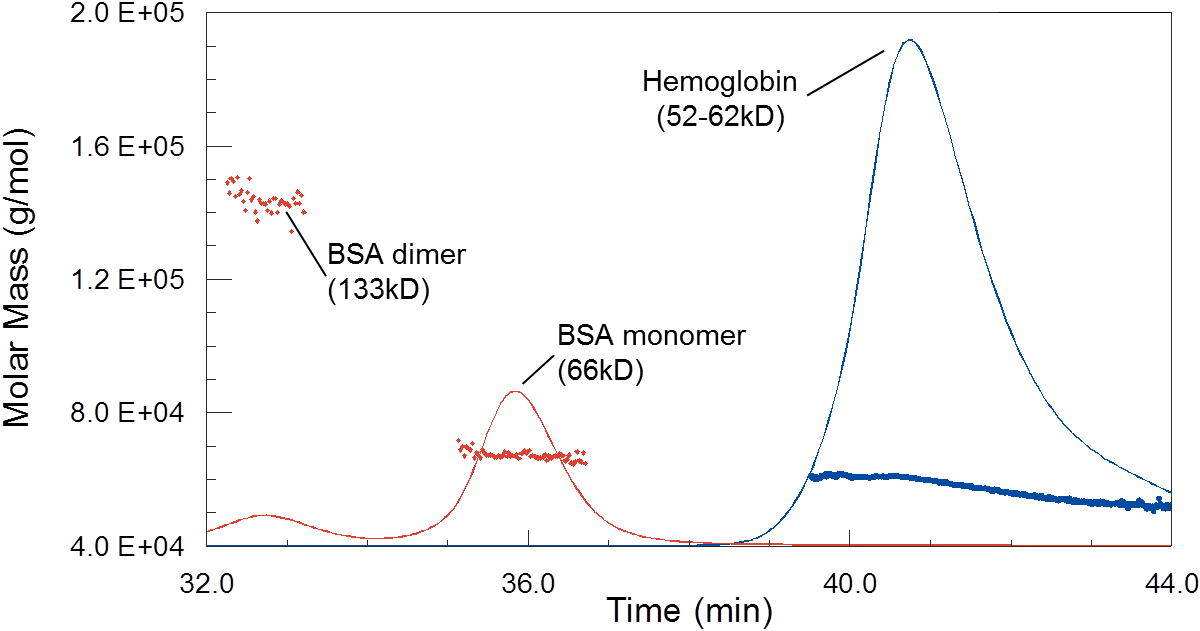
While column calibration would suggest that hemoglobin is much smaller than BSA, MALS shows that they do in fact have similar molar masses. The polydispersity of hemoglobin, seen here as a trailing shoulder on the peak with decreasing molecular weight, is due to dynamic equilibrium between monomers, dimers and tetramers.
Branching
Design and control of polymer branching permit the creation of synthetic materials with novel mechanical, thermal and rheological properties. The most reliable means of evaluating branching in all types of polymers is multi-angle light scattering, as described by Dr. Stepan Podzimek in 'Branching Revealed: Characterizing Molecular Structure in Synthetic and Natural Polymers by Multi-Angle Light Scattering' (Application Note and On-Demand Webinar).
Branching ratio is determined through the relationship between molar mass and size; both are determined simultaneously and independently via multi-angle light scattering coupled to size exclusion chromatography (SEC-MALS) or field-flow fractionation (FFF-MALS). Molecules smaller than 10 nm in radius require a ViscoStar differential viscometer to determine size or else a WyattQELS™ dynamic light scattering module embedded in the MALS detector for size measurements.
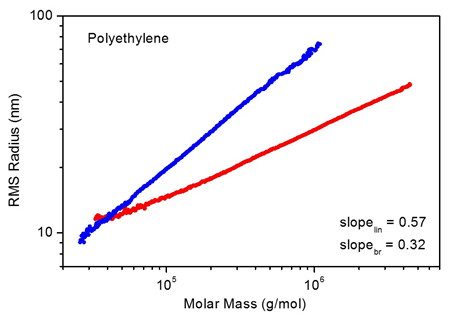
Figure 1. Analysis of branching by comparing conformation plots of linear and branched polystyrene.
While SEC-MALS is suitable for a wide variety of polymers, FFF-MALS using the Eclipse™ offers many advantages over SEC. FFF-based separation is imperative for certain large, highly branched polymers that elute abnormally from SEC columns.
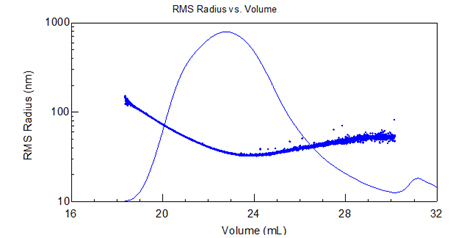
Figure 2. RMS radius vs. elution volume plot of acrylic copolymer. Separation by SEC-MALS exhibits abnormal elution (non-monotonic in molar mass).
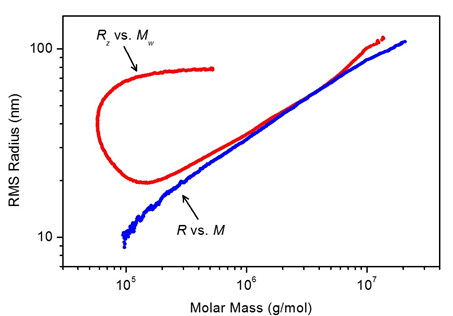
Figure 3. FFF-MALS (plotted in blue) overcomes abnormal elution and anomolous conformation plots exhibited by certain large, highly branched polymers in SEC-MALS (plotted in red).
Conformation
Even if the polymer is not branched, information regarding conformation is available in the relationship between molar mass and size, or between the ratio of rms radius rg to hydrodynamic radius rh.
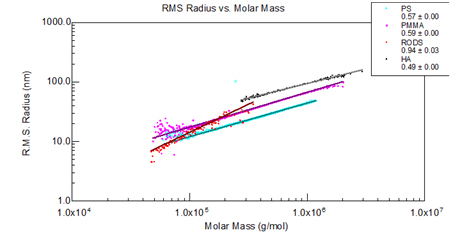
Figure 4. Polystyrene, PMMA, cellulosic rods and hyaluronic acid exhibit different slopes corresponding to different conformations.
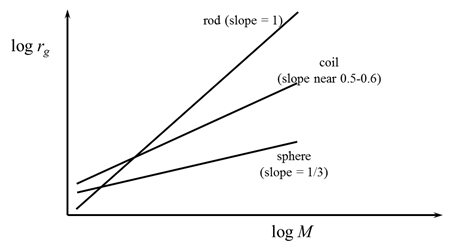
Figure 5. Theoretical relationship between mass and radius for different conformations.
